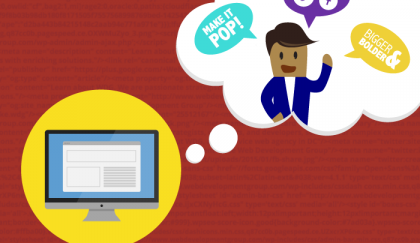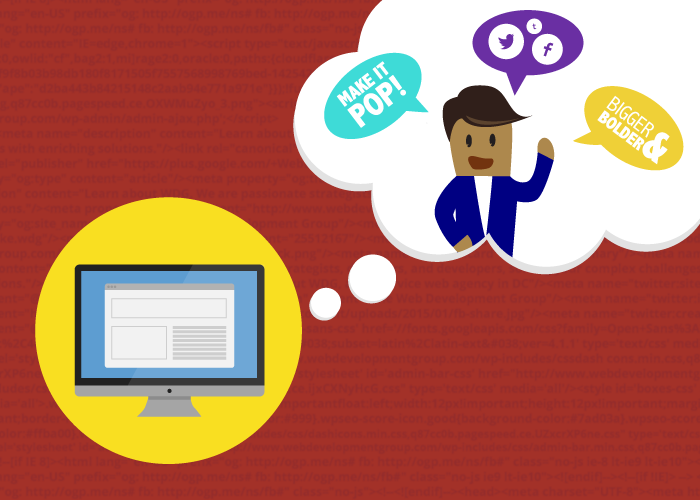A Web Designer’s Guide: 3 Tips on Designing for Clients


“Put that above the fold.”
“Can you make it pop?”
“But, will they scroll?”
Sound familiar? The hard truth is that designers feel they need to exclude clients from their processes because they “get in the way” of all the creative genius going on. But for successful website redesigns, the answer isn’t in pushing the client to the sideline. Here are a few things you can do to make designing with your clients more effective.
Design Within Their Parameters
When a design concept doesn’t meet the client’s expectations, it’s easy to blame them for not understanding your aesthetic. But resist the urge to scapegoat. Designs fail when they don’t align with or represent the client’s business, mission, or branding goals.
Instead of experimenting with wild or funky interactions, design considering what is appropriate for your client’s industry. Whenever I build a design, I always keep the client’s individual goals and their users in mind. This means only designing things that make sense and are functional, and always considering how each element benefits their users—not making sites based entirely on flair and no substance.
At the same time, be sure to consider the asset limitations of what your client provides. A project with a low budget will not use large amounts of images, video, or developmentally intense interactions. If you design assuming your client has an infinite budget, you’re guaranteeing you’ll have to do everything twice.
Educate Your Client!
When people are unsure of themselves, there’s always a natural want to have control over things. So, while you might think, “Oh, this client thinks he/she knows best,” understand that maybe it’s just a reaction to not being familiar with the process!
Take the time to educate your client. Show them why we make certain decisions. Appealing to clients with logic—rather than emotional arguments—demonstrates that there is a rhyme and reason to our processes. If they understand the standards of design, they won’t think you’re doing things just because you want to.
Defend Your Expertise (Within Reason)
Throughout the project, your clients will make many different decisions—some more difficult than others. As a designer, your job is to help them differentiate between what’s good for their business and identify what is not. Position yourself as the authority figure on all things design, especially when clients veer from what’s best from a design perspective.
But there will be times when you have to decide what’s fighting for. In general, if a request isn’t entirely detrimental to the experience, fine—let them have it. Whatever the situation is, always present the best case as to why your concept is the way to go.
Guess what? WDG is currently looking for some awesome, talented people to join our growing ranks. Think you got what it takes to be a WDG strategist or designer? Take a look at our job openings and get in touch!